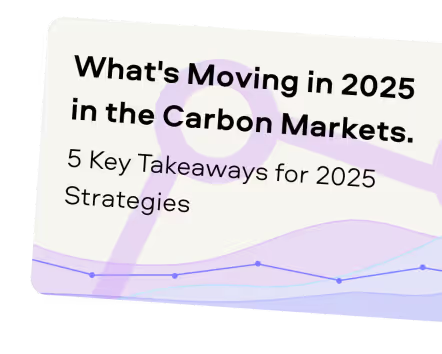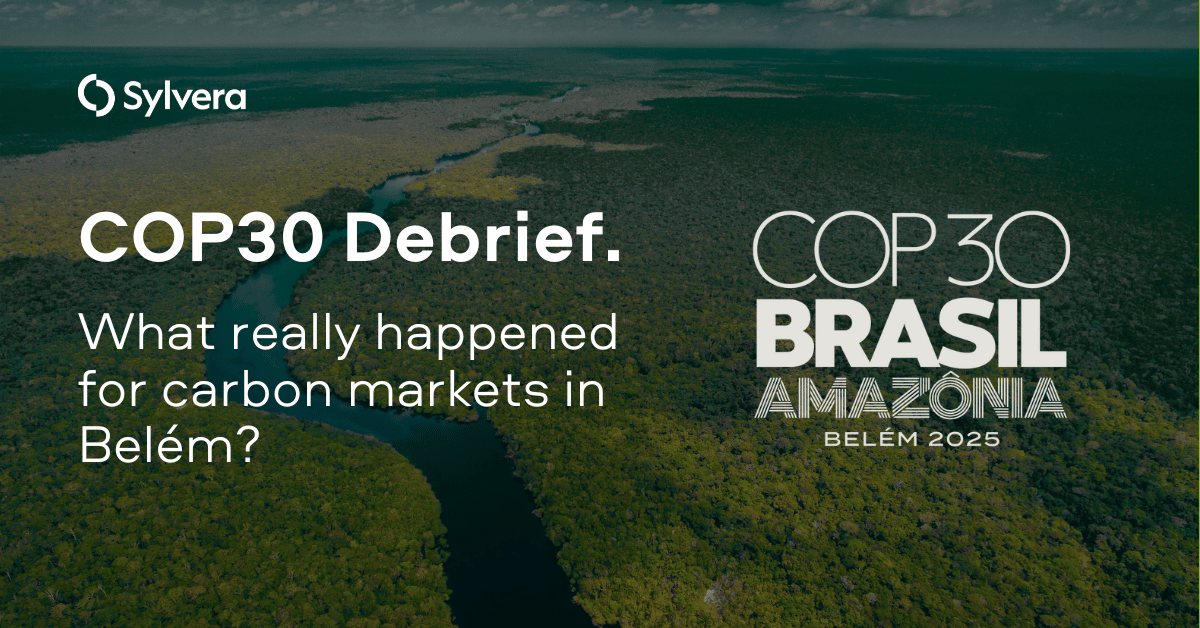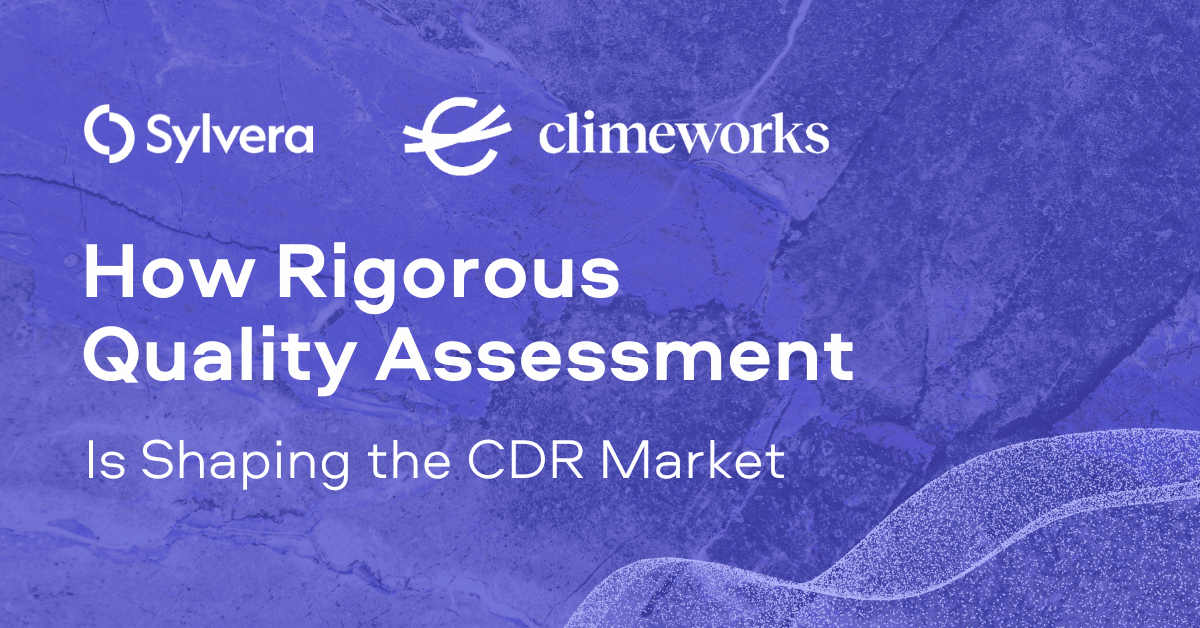“Over the years we’ve invested significantly in our field data team - focusing on producing trusted ratings. While this ensures the accuracy of our Ratings, it doesn’t allow the scale across the thousands of projects that buyers are considering.”
For more information on carbon credit procurement trends, read our "Key Takeaways for 2025" article. We share five, data-backed tips to improve your procurement strategy.

One more thing: Connect to Supply customers also get access to the rest of Sylvera's tools. That means you can easily see project ratings and evaluate an individual project's strengths, procure quality carbon credits, and even monitor project activity (particularly if you’ve invested at the pre-issuance stage.)
Book a free demo of Sylvera to see our platform's procurement and reporting features in action.
Despite not being a headline priority, Article 6 negotiations and related announcements emerged as one of the key themes of COP30 in Belém, Brazil.
We gathered an expert panel to unpack what happened, what was decided, and what it all means for investors, project developers, policymakers, and corporate buyers.
Panellists:
- Molly Peters-Stanley, Sylvera and CORSIA
- Simon Fellermeyer, Swiss Federal Office for the Environment
- Andrea Bonzanni, IETA
- Janaina Dallan, Carbonext
- Filipe Blackwood Oliveira, Rubicon Carbon
- Ben Rattenbury, Sylvera (moderator)
Watch the full Decoding COP30 webinar on-demand here.
What happened: 3 key developments
1. The end of the CDM
After years of discussion, parties agreed to shut down the Clean Development Mechanism (CDM), the Kyoto Protocol's carbon crediting system that has issued nearly 2.5 billion credits since its rules were agreed in 2001.
The CDM will cease operations by the end of 2026, with various functions shut down throughout the year.
This matters for two reasons:
- Clarity: It provides much-needed focus on which crediting system the market should prioritize - the Paris Agreement's Article 6.4 mechanism, now known as the Paris Agreement Crediting Mechanism, or PACM
- Funding: The CDM's remaining funds will be transferred to support the development of the PACM
Read more about the CDM to PACM transition here.
This decision ends the inefficiency of developing updated CDM methodologies that were unlikely to see real-world application. With the CDM's closure confirmed, attention and resources can now be fully directed toward building out the PACM.
2. Article 6.4 (AKA the PACM): Green light to continue
For the PACM, negotiators resisted several proposals that would have reopened already-settled guidance.
This included attempts to:
- Make the rules more explicit on the role of nature-based projects
- Remove term limits for members of the SBM, the supervisory body which oversees the PACM
- Create backdoors for forest credits issued outside formal processes
The rejection of these proposals sent a clear signal that the Supervisory Body should stay its course and focus on implementation. The message was essentially to stay on track and continue to trust the SBM to conduct its work.
Crucially, parties extended the deadline by six months for countries to decide whether CDM projects they host can transition to Article 6.4. Combined with clear methodological priorities - likely focusing on renewable energy and cookstoves first - this sets the stage for the first new PACM project registrations in 2026.
3. Article 6.2: Increased scrutiny
Article 6.2 - the pathway for bilateral carbon trading between countries - saw important developments around accountability.
Future COPs will provide more structured feedback on individual bilateral agreements, and inconsistencies between the rules and actual practice will face stricter guidance.
This shift toward implementation feedback rather than new rule-making is significant. It was noted as the first time the CMA had to move from a negotiation focus and shift to providing feedback on existing guidance.
Beyond the negotiations
Perhaps equally important were developments outside the formal negotiation rooms.
The Open Coalition on Carbon Markets
Brazil launched its Open Coalition on Carbon Markets, which has been formed to establish a shared standard and connect different carbon credit trading systems to generate liquidity, predictability, and transparency for the sector.
The initiative now includes Brazil, China, the European Union, the United Kingdom, Canada, Chile, Germany, Mexico, Armenia, Zambia, France, Rwanda, Andorra, Guinea, New Zealand, Monaco, Singapore, and Norway.
This coalition emphasizes cooperation over fragmentation and signals strong multilateral support for carbon markets.
The Coalition to Grow Carbon Markets
The Coalition to Grow Carbon Markets, launched by co-chairs Singapore, the UK and Kenya in September with the goal of strengthening high-integrity corporate demand for carbon credits, unveiled its full principles, as well as a growing number of countries endorsing them. This group now includes Canada, France, Kenya, Luxembourg, New Zealand, Panama, Peru, Singapore, Switzerland, the UK, and Zambia. Germany, Indonesia, the Netherlands and South Africa also expressed support for the initiative.
New investments
In total, market participants announced $1.1 billion worth of investments between November 3-21, a 42% increase on the previous COP held in Baku, Azerbaijan (QCI). And it was noted that 78% of that capital was directed to nature-based solutions.
The message is clear: markets aren't waiting for perfect political consensus to move forward.
The outcome: What COP30 means for carbon market participants
For project developers
Implementation is the key word. Integrity and transparency are becoming non-negotiable.
Developers who lead on these fronts will define the next generation of projects. Key priorities include:
- Digital monitoring, reporting, and verification (MRV)
- Proper safeguards and benefit-sharing mechanisms
- Nesting projects into national systems
- Ensuring meaningful engagement with indigenous and local communities
For investors
The 42% jump in announced investments (comparing 2025 to 2024) shows clear momentum building.
With integrity frameworks improving, methodologies being refined, and digital MRV becoming standard, nature-based solutions are re-emerging as a credible asset class with long-term value.
The market appears to be reaching a point where the increased education and transparency around market integrity have helped buyers better understand the conditions for engagement - so building confidence in the timing of their participation.
For corporate buyers
The Coalition to Grow Carbon Markets aims to send a clear message: high-quality carbon market participation should be encouraged, not feared.
Countries are signaling progress, encouraging buyers that purchasing with integrity - with improving transparency and methodologies - is preferred to not acting out of repercussions.
With Article 6.2 providing clearer frameworks and long-term offtake agreements becoming more common, the pathway for corporate action is becoming clearer.
For governments
Countries now have concrete implementation work ahead.
For host countries, the coming year will be critical in the race to position themselves to capture an estimated $4-5 billion in carbon finance from CORSIA demand for Article 6.2 authorized units by late 2027.
CORSIA is projected to be a significantly larger source of demand for carbon credits between now and 2030 than countries using credits toward their own climate commitments.
Close to 200 million tons of Article 6.2 authorized units are expected to be procured for CORSIA compliance by early 2028, making near-term implementation essential.
The focus therefore shifts toward practical benefit-sharing models, where Article 6.2 authorizations could help finance countries' own climate commitments, while supplying international demand.
There’s also a need to ensure buyer countries incorporate CORSIA supply provisions into their bilateral agreements, so airlines aren't left without compliance options two years from now.
Looking ahead
In a challenging geopolitical moment, COP30 proved that multilateralism still works.
Given the shifting political landscape and the absence of the US government, the fact that all other countries remained constructively engaged and the COP proceeded relatively smoothly was a significant achievement for international cooperation, and one that shouldn't be taken for granted.
What to expect in 2026
The real test comes in 2026. What needs to happen:
- The Methodological Expert Panel must develop new methodologies, with grid-connected renewable energy and cookstoves likely coming first
- The Supervisory Body must balance integrity with practical market development
- Host countries in particular need to accelerate Article 6 implementation to meet looming compliance deadlines
But the foundation is solid. With clear governance structures now in place and reaffirmed, the focus shifts to operational delivery - developing the right methodologies and working toward the issuance of the first units by the end of 2026.
COP30 delivered what markets needed in terms of clarity on direction, space for negotiators to work, and political signals strong enough to keep momentum building.
How can the Sylvera platform help you navigate these outcomes?
Article 6 implementation tracking — Monitor bilateral agreement frameworks, CDM transition deadlines, Article 6.4 methodology approvals, and supervisory body guidance as they evolve in real-time through Market Commentary.
Country readiness assessment — Understand which host countries are advancing Article 6.2 authorization processes, evaluate governance frameworks, and benchmark capacity across jurisdictions with Country Profiles.
Compliance-ready project supply — Filter the Project Catalog by Article 6.2 authorization status, CORSIA eligibility, and methodology acceptance to identify credits that meet evolving regulatory requirements.
CORSIA demand modeling — Size the compliance opportunities, model supply constraints from limited 2026 Article 6.4 issuance, and track pricing dynamics through Market Intelligence.
Integrity-policy integration — Connect project quality ratings to Article 6 authorization requirements and CORSIA eligibility standards, ensuring your decisions balance regulatory compliance with environmental integrity.
Get started with your own 1-2-1 demo
Want to get started with using the Sylvera platform in your strategic decision-making? We’d love to help. Request a demo to see our market-leading carbon data platform in action for your business. Or try the free access version right now.
Hear the full expert discussion
Watch the full Decoding COP30 webinar on-demand here.












.jpg)



